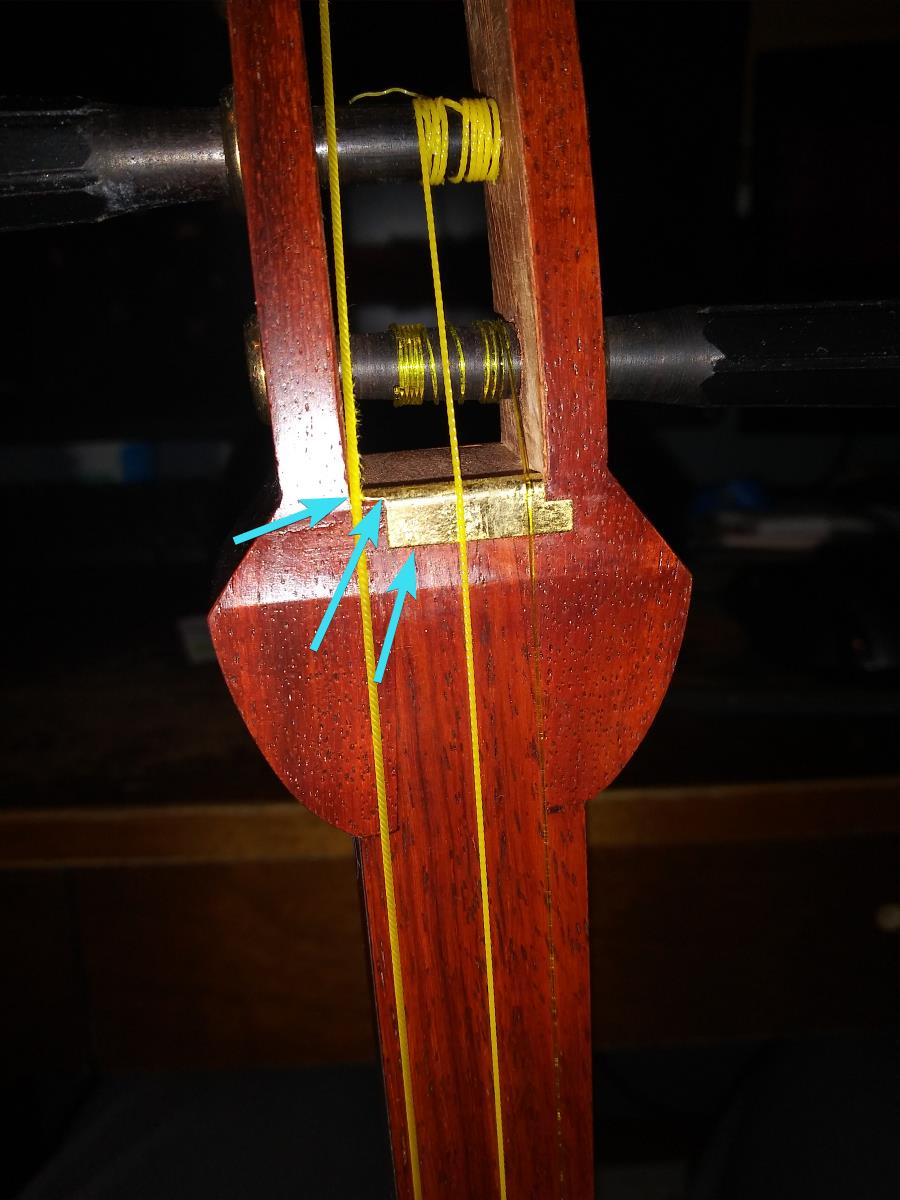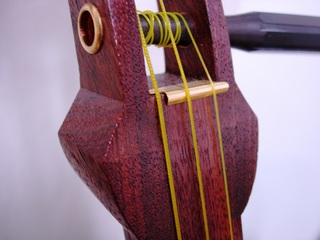
I’m confused about what this metal part at the entrance to the pegbox is. My issue is that the ichi no ito keeps slipping to the left of the metal, as seen in this picture with the leftmost arrow. Is it supposed to be to the left of the metal or is it supposed to be on it? Because I can’t get it to stay on it. When it slips off, it makes a much more apparent buzz, and it’s a bit too close to the edge of the neck for my tastes, so I’d rather have it stay over the metal. What would be a simple way to do this?
On a shamisen like that, the ichi no ito sits in a little notch carved into the wood to the side of the metal, not touching it - that buzz is by design. On higher end shamisen the entire nut is metal, with an adjustable block controlled by a dial to hone in the buzz to taste. But when that’s not installed, this is how that buzz is achieved even though it’s not necessarily that adjustable. I’ve heard some people mute the buzz slightly by putting a piece of folded tape under the string, but that aside the string is technically sliding to where it’s supposed to.
As Ian said, the buzz is intentional. When using a shamisen with a yamasawai, the ichi-no-ito will not sit on the nut but off to the side. The difference in height allows for the creation of sawari.
That said, your first string does look to be a little too far over. In principle, your ichi-no-ito should not touch the edge of the peg box.

Yeah, your picture looks like how I have to set it. It usually slips to the left, which on mine seems to not go all the way to the edge of the peg box, but yours does.
That’s just a pic off the net. My spare with a yamasawari is presently on loan.
Rewind your ichi-no-ito so it doesn’t go so far over. That’ll help.
Some shamisen have a small notch carved into the wood to help seat the string as well. On nuts used with azuma-sawari shamisen, there’s usually a small depression in the metal that serves the same purpose.
I’ve rewound it several times and I can’t get it to stay in the right spot. Each time I hit it it falls back onto the edge of the peg box.
